
Specialty vehicles contractor Oshkosh (NYSE:OSK) fell short of the market’s revenue expectations in Q1 CY2025, with sales falling 9.1% year on year to $2.31 billion. Its non-GAAP profit of $1.92 per share was 5.8% below analysts’ consensus estimates.
Is now the time to buy Oshkosh? Find out by accessing our full research report, it’s free.
Oshkosh (OSK) Q1 CY2025 Highlights:
- Revenue: $2.31 billion vs analyst estimates of $2.42 billion (9.1% year-on-year decline, 4.5% miss)
- Adjusted EPS: $1.92 vs analyst expectations of $2.04 (5.8% miss)
- Adjusted EBITDA: $229 million vs analyst estimates of $249.9 million (9.9% margin, 8.4% miss)
- Operating Margin: 7.6%, down from 10.2% in the same quarter last year
- Free Cash Flow was -$435.2 million compared to -$455.9 million in the same quarter last year
- Backlog: $14.62 billion at quarter end, down 10.6% year on year
- Market Capitalization: $5.70 billion
“We are pleased with our start to 2025, led by strong performance in our Vocational segment, double-digit margins in our Access segment and solid progress on the ramp-up of Next Generation Delivery Vehicle production. Adjusted earnings per share of $1.92 was in line with our expectations of approximately $2.00 per share,” said John Pfeifer, president and chief executive officer of Oshkosh Corporation.
Company Overview
Oshkosh (NYSE:OSK) manufactures specialty vehicles for the defense, fire, emergency, and commercial industry, operating various brand subsidiaries within each industry.
Sales Growth
Examining a company’s long-term performance can provide clues about its quality. Any business can put up a good quarter or two, but many enduring ones grow for years. Unfortunately, Oshkosh’s 5.4% annualized revenue growth over the last five years was tepid. This fell short of our benchmark for the industrials sector and is a tough starting point for our analysis.
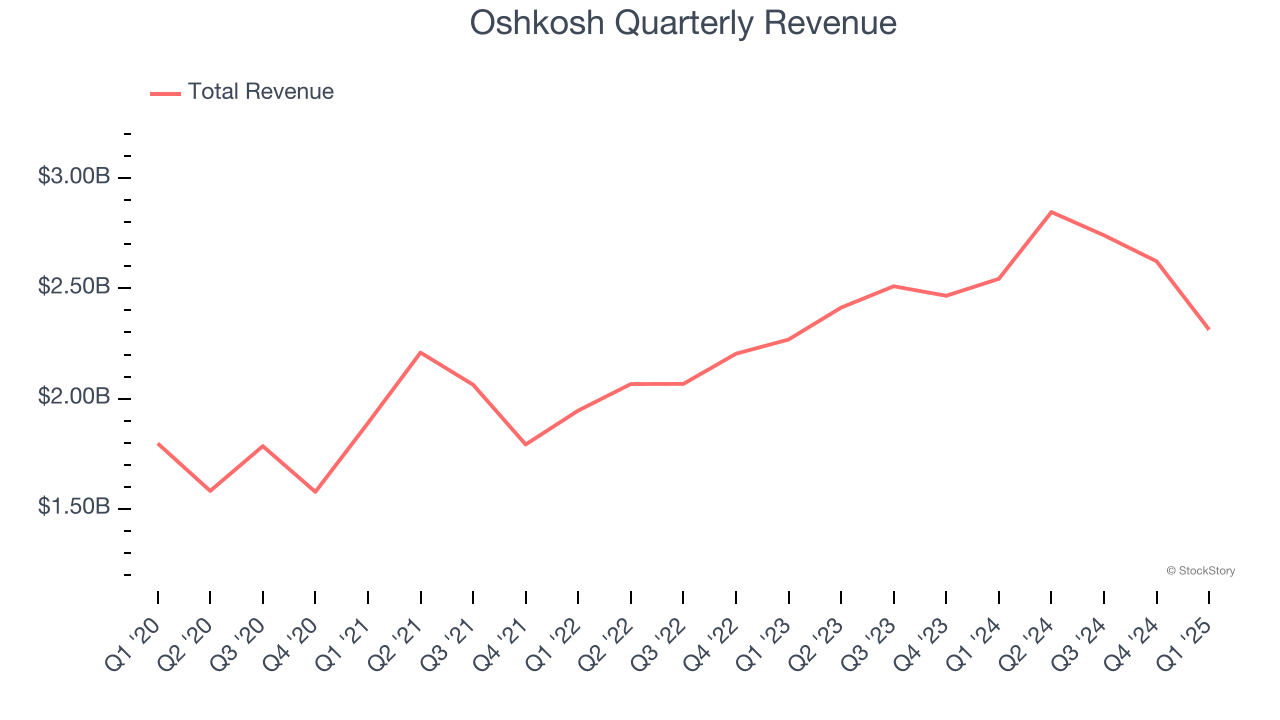
Long-term growth is the most important, but within industrials, a half-decade historical view may miss new industry trends or demand cycles. Oshkosh’s annualized revenue growth of 10.6% over the last two years is above its five-year trend, suggesting its demand recently accelerated. Oshkosh recent performance stands out, especially when considering many similar Heavy Transportation Equipment businesses faced declining sales because of cyclical headwinds. 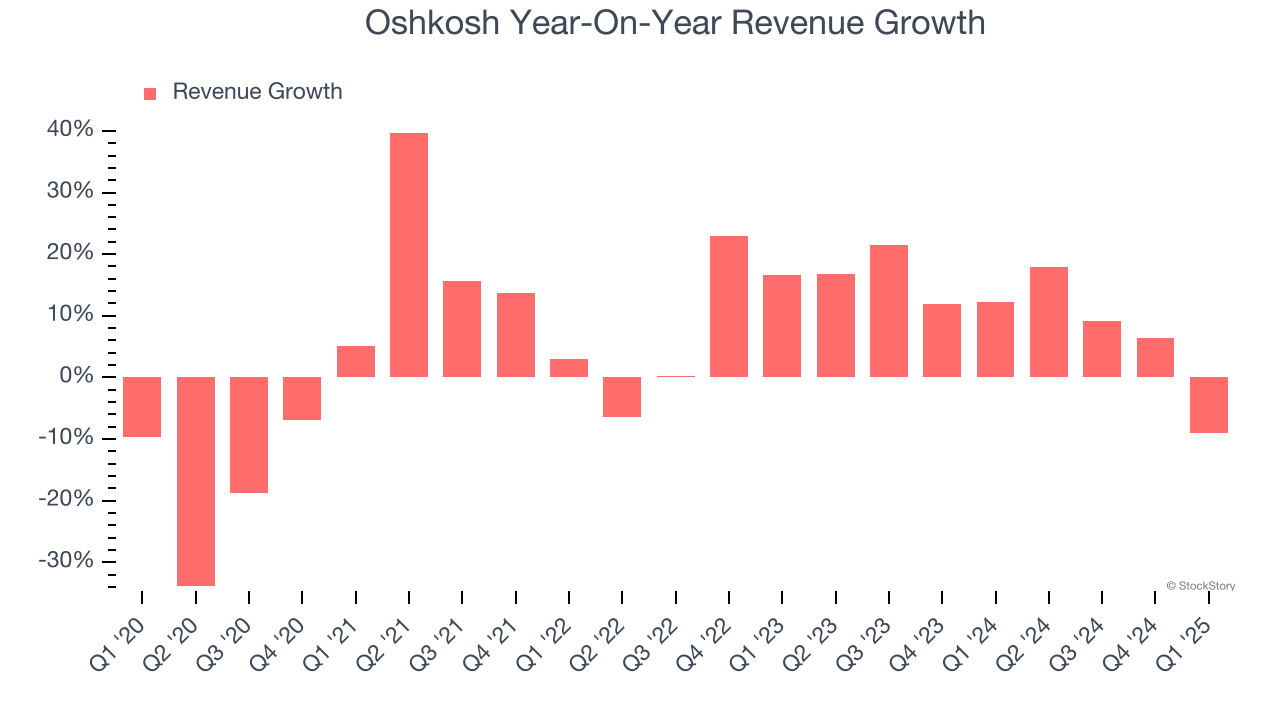
We can better understand the company’s revenue dynamics by analyzing its backlog, or the value of its outstanding orders that have not yet been executed or delivered. Oshkosh’s backlog reached $14.62 billion in the latest quarter and averaged 4% year-on-year growth over the last two years. Because this number is lower than its revenue growth, we can see the company fulfilled orders at a faster rate than it added new orders to the backlog. This implies Oshkosh was operating efficiently but raises questions about the health of its sales pipeline. 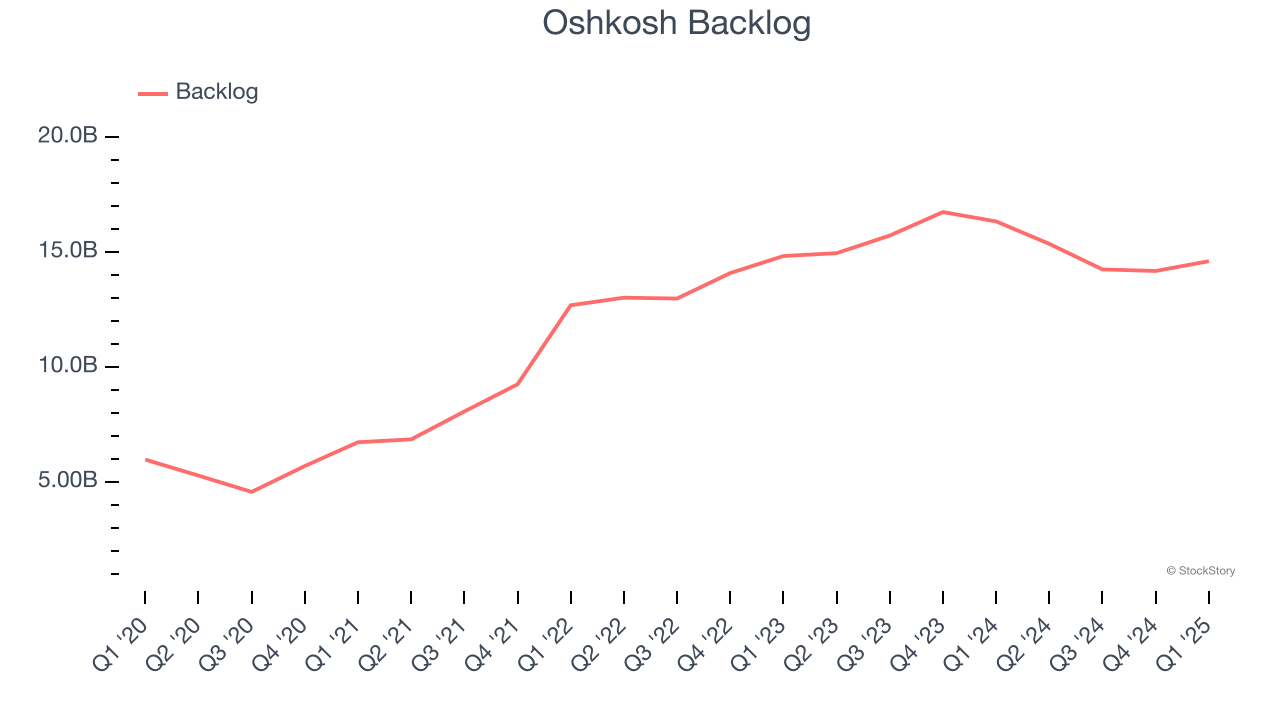
This quarter, Oshkosh missed Wall Street’s estimates and reported a rather uninspiring 9.1% year-on-year revenue decline, generating $2.31 billion of revenue.
Looking ahead, sell-side analysts expect revenue to grow 1.2% over the next 12 months, a deceleration versus the last two years. This projection doesn't excite us and implies its products and services will face some demand challenges.
Unless you’ve been living under a rock, it should be obvious by now that generative AI is going to have a huge impact on how large corporations do business. While Nvidia and AMD are trading close to all-time highs, we prefer a lesser-known (but still profitable) stock benefiting from the rise of AI. Click here to access our free report one of our favorites growth stories.
Operating Margin
Operating margin is an important measure of profitability as it shows the portion of revenue left after accounting for all core expenses – everything from the cost of goods sold to advertising and wages. It’s also useful for comparing profitability across companies with different levels of debt and tax rates because it excludes interest and taxes.
Oshkosh was profitable over the last five years but held back by its large cost base. Its average operating margin of 7.4% was weak for an industrials business. This result isn’t too surprising given its low gross margin as a starting point.
On the plus side, Oshkosh’s operating margin rose by 1.7 percentage points over the last five years, as its sales growth gave it operating leverage.
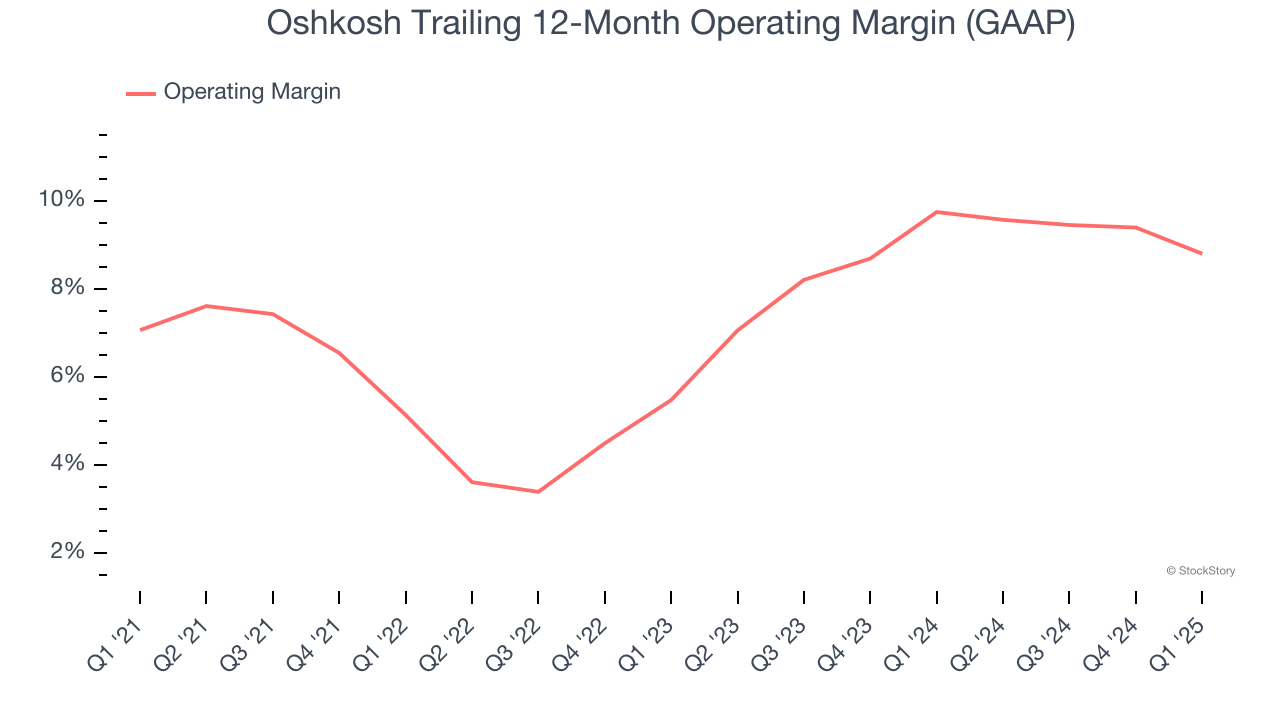
This quarter, Oshkosh generated an operating profit margin of 7.6%, down 2.6 percentage points year on year. Since Oshkosh’s operating margin decreased more than its gross margin, we can assume it was less efficient because expenses such as marketing, R&D, and administrative overhead increased.
Earnings Per Share
We track the long-term change in earnings per share (EPS) for the same reason as long-term revenue growth. Compared to revenue, however, EPS highlights whether a company’s growth is profitable.
Oshkosh’s EPS grew at a decent 8.2% compounded annual growth rate over the last five years, higher than its 5.4% annualized revenue growth. This tells us the company became more profitable on a per-share basis as it expanded.

Diving into the nuances of Oshkosh’s earnings can give us a better understanding of its performance. As we mentioned earlier, Oshkosh’s operating margin declined this quarter but expanded by 1.7 percentage points over the last five years. Its share count also shrank by 5.5%, and these factors together are positive signs for shareholders because improving profitability and share buybacks turbocharge EPS growth relative to revenue growth. 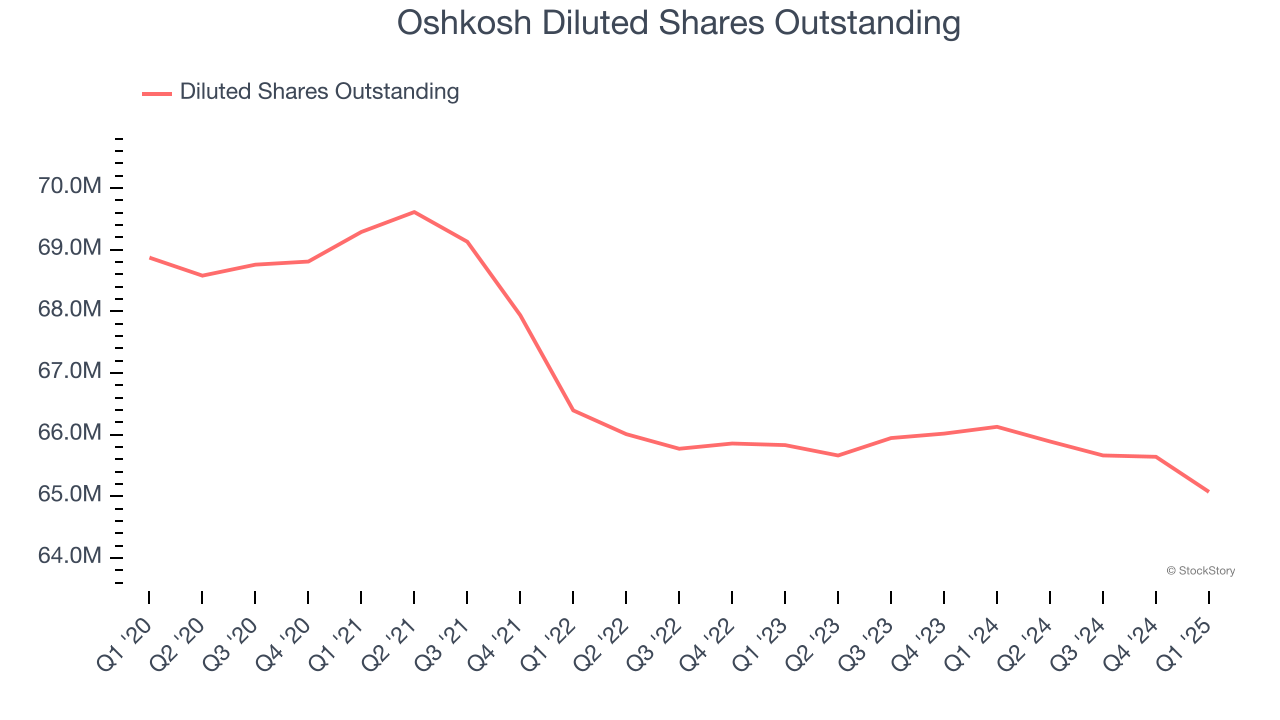
Like with revenue, we analyze EPS over a more recent period because it can provide insight into an emerging theme or development for the business.
For Oshkosh, its two-year annual EPS growth of 48.7% was higher than its five-year trend. This acceleration made it one of the faster-growing industrials companies in recent history.
In Q1, Oshkosh reported EPS at $1.92, down from $2.89 in the same quarter last year. This print missed analysts’ estimates, but we care more about long-term EPS growth than short-term movements. Over the next 12 months, Wall Street expects Oshkosh’s full-year EPS of $10.77 to stay about the same.
Key Takeaways from Oshkosh’s Q1 Results
We were impressed by how significantly Oshkosh blew past analysts’ backlog expectations this quarter. On the other hand, its revenue missed significantly and its EBITDA fell short of Wall Street’s estimates. Overall, this quarter could have been better. The stock traded down 2.6% to $86 immediately after reporting.
Oshkosh’s earnings report left more to be desired. Let’s look forward to see if this quarter has created an opportunity to buy the stock. When making that decision, it’s important to consider its valuation, business qualities, as well as what has happened in the latest quarter. We cover that in our actionable full research report which you can read here, it’s free.
